By Pete Vack
In 2012, Dennis Shoff and Dave Rex found a 1952 road race special named the “Comet” in the back of a race shop at Virginia International Raceway, and purchased it from fellow vintage racer Larry Narcus, who had restored the car and gathered some of the car’s history including contact information for the car’s ex-owner and driver, Glen Glendenning.
Dennis and Dave made contact with Glendenning, who at the time was living in Florida. This began a long relationship with Glendenning, who was able to not only share information on the Comet but many interesting stories of sportscar racing in the 50s. In addition, it was learned that Glenn had been an excellent photographer and owned a PR firm with a film lab, and produced 26 films for the Schlitz brewery.
Just prior to his passing in 2014, Glendenning called Dave and said he had a large box of pictures from races and other car events that he had taken in the 1950s. Glendenning said “I’m not even going to open the box, I’ll just tape it up and send it to you because I know you will take proper care of them.”
The box consisted of dozens of loose scrapbook pages. Most of the photos, as might be expected, were of above snapshot quality, well framed, in focus and taken with a 35 mm SLR with a good lens. That in itself was unusual in an era of brownie cameras and furthermore, Glen Glendenning knew most everyone in the budding sport, and had access to pits, corners and people. The box of photos teemed with promise.
Glen was known by many people, but few knew him well and many have departed the scene. The following is what we’ve learned about Glen from a few of his friends and acquaintances.
He was born on August 20, 1926 in Evanston Illinois, where his father ran a Cadillac dealership. He once told Dave Rex that his uncle Raymond was a sports commentator for the BBC. In a recorded interview with Dennis Shoff in 2013, Glendenning said that he got into sports cars when he bought a Healey Silverstone, then bought an MGTC, perhaps with the help of his friend Larry Whiting, also a prominent Wisconsin enthusiast who was very much involved in early Road America as a racer and also track Public Address Announcer. According to Bob Birmingham, Glen was “a promoter, an interesting sort who could regale listeners with tales of his world travels, and experiences that were almost beyond belief.”
In traveling to events, he used a Ford (or Chevy) Woody station wagon that served many purposes, as a tow car, and filled with spare race tires and tools. It was reported that inside the Woody he carried a parachute and water skis, an empty holster and a ham radio he loudly used to converse with others on a variety of topics while waiting at lights.
Although he ventured to Indianapolis, Sebring, and Bridgehampton NY, he stayed close to home most of the time, attending, photographing and sometimes racing at the many venues close to Milwaukee, including Road America and the Milwaukee State Fairground. His last set of photos as found in his album were taken at Meadowdale, Illinois, September 14, 1958. It is said that at the end of the decade he went to the Bahamas and operated a marine shipping company.
Glen told Rex that he had the 4th Austin Healy that came into the U.S. and met Donald Healy at Sebring. He sold an Allard when the Healey arrived. “Glen also said he drove at Sebring in Larry Whiting’s Morris Minor and Rod Carveth’s Aston Martin (car didn’t do well).” Larry Whiting and Karl Brocken, both from the Milwaukee area, did race a Morris Minor at Sebring in 1950, placing 14th overall, and while Glen may have helped along the way, he is not listed in the official results.
In 1954 Glendenning purchased the Comet, a homebuilt special with a MGTD chassis with a Glaspar body and a Ford Flathead engine. The body was shortened 7 inches by cutting a section from the cockpit. Glen bought the car and began entering it in SCCA races, hill climbs and other Milwaukee area events. Says Rex, “In 1957 Augie Pabst co—drove the car with Glen in a 500-mile race at Road America. Augie told Rex that the car’s brakes were the worst he had ever experienced! In 1956 after blowing up a few flatheads, Glenn was given a Chevrolet 283 engine and transmission by a well-connected friend at Chevrolet. Instructions were included that if any problems occurred, to refer them to Chevrolet engineering. Glen took the car to Granatelli in Chicago and had 3 carbs installed.”
Road America historian Tom Schultz has Glendenning’s race record as:
8-15-54 Milwaukee Regional, 9 OA
9-11-55 Road America National, 18 OA
5-20-56 Milwaukee Regional, 11 OA
7-01-56 Milwaukee MG Car Club race, 2 OA
9-08-57 Road America 500, 32 OA
Writes Shultz: “Glen was far more involved in the social aspects of sports cars than the racing. He did have the Comet special, but did not race it much at all.”
Read more about the Comet:
Putting the Sport in Sports Cars
Along with two other pioneers, the late Robert F. Pauley and Frank Shaffer, Glendenning left us a unique vision of the sports car movement that changed America. We have selected only a few of his many photos to present here as a gallery, for what Glen Glendenning saw was how the sport was in fact a sport; once the invasion of foreign sports cars had begun, the new owners used them in many different ways; rallies, trials, ice races, hillclimbs and sanctioned road racing on both public and private roads. Women were a part of this new exciting hobby as never before; still banned from the pits at Indianapolis, women were active in the pits as timers and assistants, in rallies as navigators. Some, like Betty Skelton, became famous, and others, like Ruth Levy were excellent race drivers in their own right. The epitome of the movement was road racing, and the Maseratis and Ferraris that competed at those Midwest racetracks were and remain cultural objects of high value today. Through the viewfinder, Glen Glendenning saw this and much more. Below, we present just a few of the many photos Glen Glendenning took that reflected the Sports Car Craze that Changed America.
Glen Glendenning Gallery Number One
A great driver portrait by Glendenning. The subject was John Kilborn, a car dealer from Decatur, Illinois, whose family started a Nash dealership in 1925 and by 1953 was selling Dodge cars and trucks under the banner of Kilborn Motors Inc. After serving in the Marines during World War II, John returned home but his interest tended to be more toward MGs and Jaguars rather than Detroit products. He owned and raced several Ferraris until he retired from racing in 1964. Kilborn died in 1980 at age 65. Kilborn is photographed on June 16, 1957 at a little known hillclimb called Rib Mountain located near Wausau, Wisconsin. The event was sponsored by the Milwaukee region of the SCCA; Kilborn set the fastest time of day. The car is a Ferrari 750 Monza Scaglietti, s/n 0518M. Originally went to Jacques Swaters in Belgium, and driven in a number of European events until being sold to Kilborn in early 1957. He raced it all year with modest success before selling it to Dean Knight of Oklahoma in 1958.
And, what have we here? A stock car race? Glen Glendenning was at Road America on August 12, 1956 to witness what was perhaps the first time NASCAR stock cars raced on anything beside an oval. Of course, Road & Track was not impressed. “Cornering techniques (if you’ll pardon the phrase) for the stocks appalling – they half slam, half throw them thru, then appear to pray like mad.” The driver above is the redoubtable Lee Petty, father of Richard, grandfather of Kyle, who was running a Dodge, probably with the Dodge version of the Chrysler hemi. He could only muster up a 13th place as Tim Flock won the race in a Mercury.
Let’s say she’s a model, though we have no idea of when or where the photo was taken or the identities of the couple. Let’s say it is probably a SAC event as it is on an airport so that makes it post 1952 and before 1958 when Glen Glendenning gave up race photography. And let’s say that this is a ‘cheesecake’ shot…that’s a term for a sexy woman, or scantily clad which dates back to the 1660’s but was still in popular usage in the 1950s. The model’s svelte lines contrast nicely with the traditional British Upright design of the MGTC. A classy cheesecake though, wouldn’t you say?
Bridgehampton was a mess, a tragic event that led very quickly to the complete ban of all racing on public roads in the state of New York. Road and Track was brief, one column, no photos. “Robert Wilder of Palmer, Mass. was killed when his car went out of control.” In the second event, “Tom Luck of Philadelphia flipped his Siata and sustained a fractured collar bone and minor cuts.” Glen Glendening was on the scene shortly after the accident and took this photo of the rolled Siata. In the last event, Harry Gray lost control of his Jaguar and overturned, hurting three spectators sitting in an area marked ‘No Spectators Allowed.’ The race was not completed.
The glitter of black is reflected in this photo by Glen Glendenning of the Alfa Veloce of Ted Baumgartner, who put his Alfa into fourth overall behind three Porsche Carreras in the first race for Production cars during the September, 1958 event at Road America. One might think Ted was a lone Alfa stalwart holding off the German hordes for the glory of Italy. But according to Bob Birmingham, Ted Baumgartner, who was working at Schwarztburg Oldsmobile after WWII, established Concours Motors in the mid-1950s with Bill Wuesthoff selling VWs. A few years later Baumgartner sold his interest in Concours Motors to open his own shop, Baumgartner Motors, selling Porsches, Alfas and Triumphs in Wauwatosa, Wisconsin outside of Milwaukee. Baumgartner was probably chasing Porsches he sold.
To counter the increasingly obvious sports car craze, Harley Earl came up with the Corvette in 1953, but with a straight six, performance was lame. Enter Zora Arkus Duntov who in 1956 took a stock Vette off the line and fitted it with a special body designed by Bob Cumberford. The new 265 V8 had a special Duntov cam and with heavy duty suspension, Cerametalix Bendix brake linings and Houdaille shocks, the Vette was ready to face the opposition. Glen Glendenning captured the first appearance of the SR2 Corvette as driven by the Flying Dentist Dick Thompson at Road America in June of 1956. The car failed to place well, finishing in 16th in the B, C, and D modified class. Jerome Earl, Harley’s son, co-drove with Thompson.

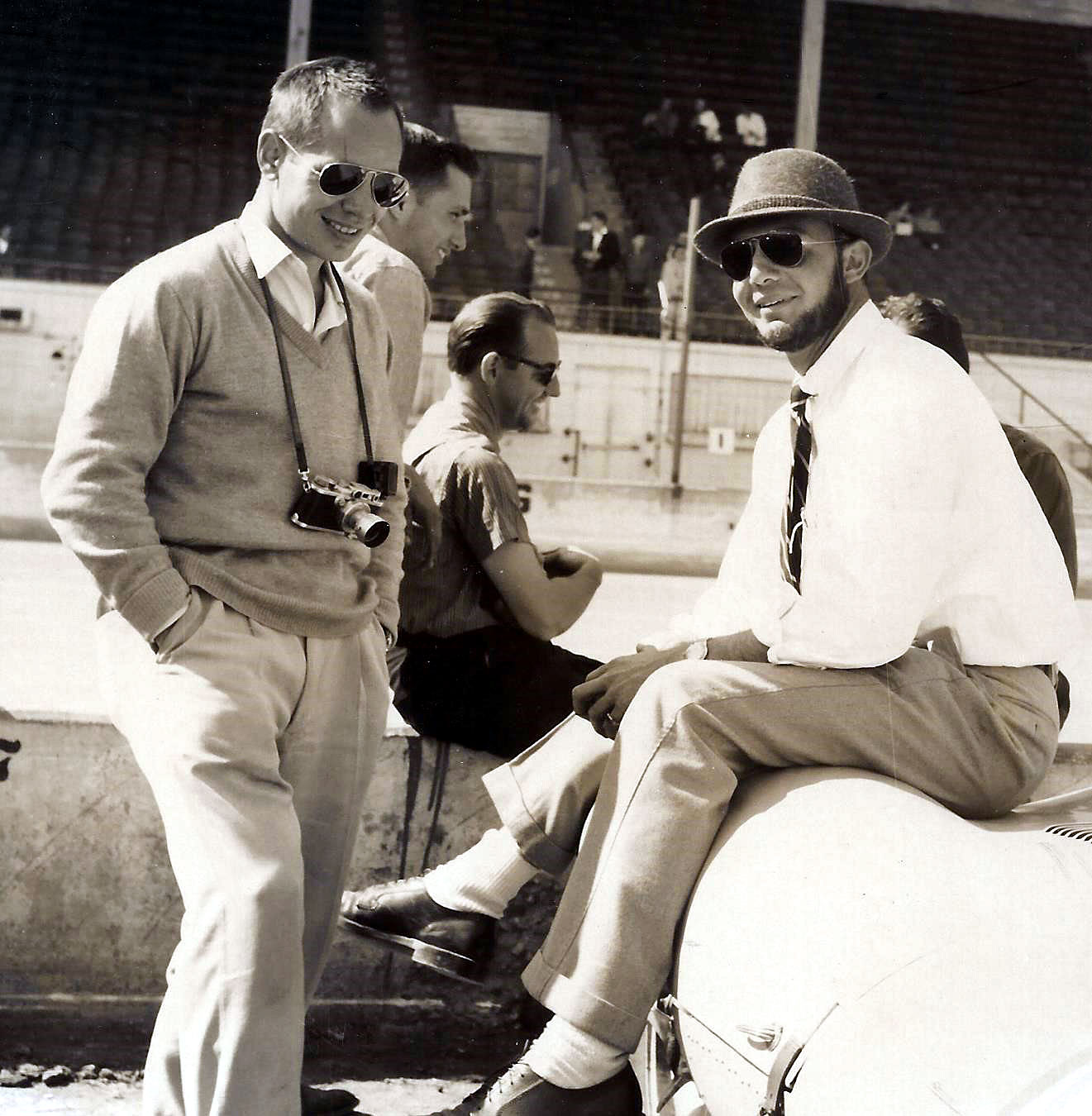
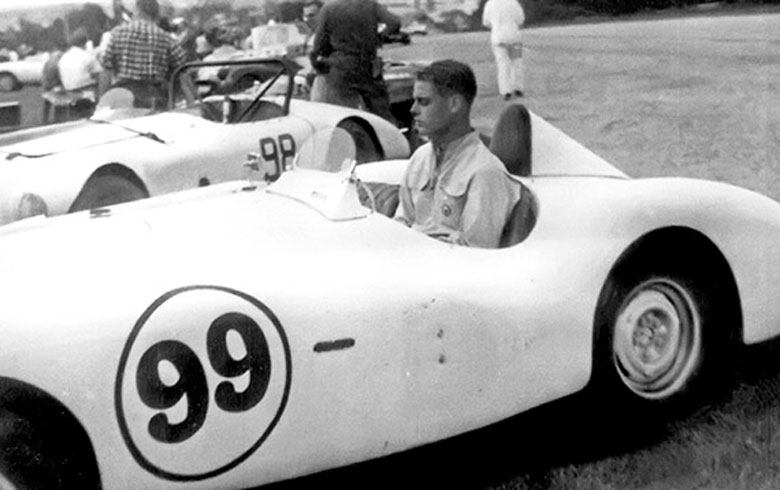
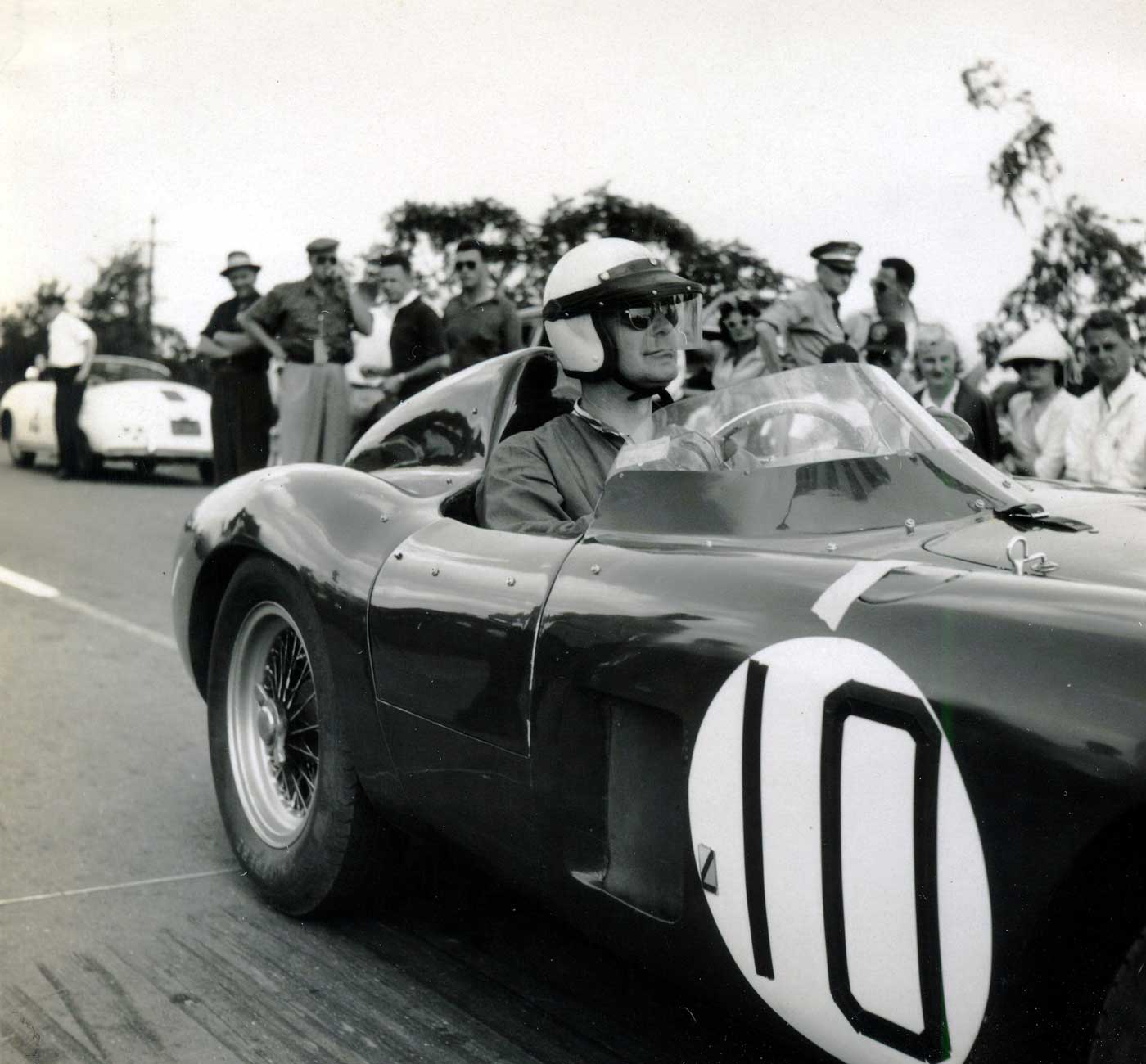
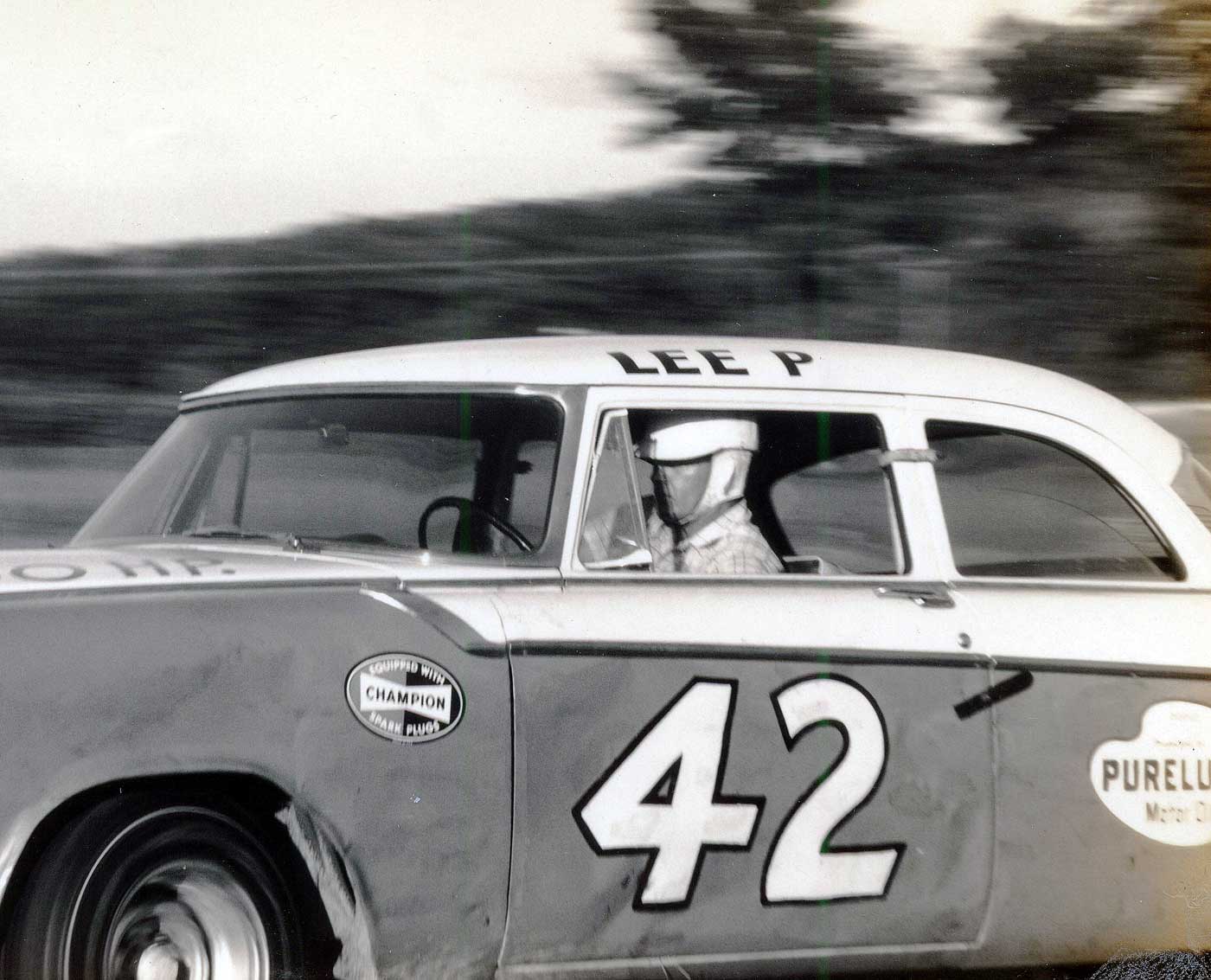
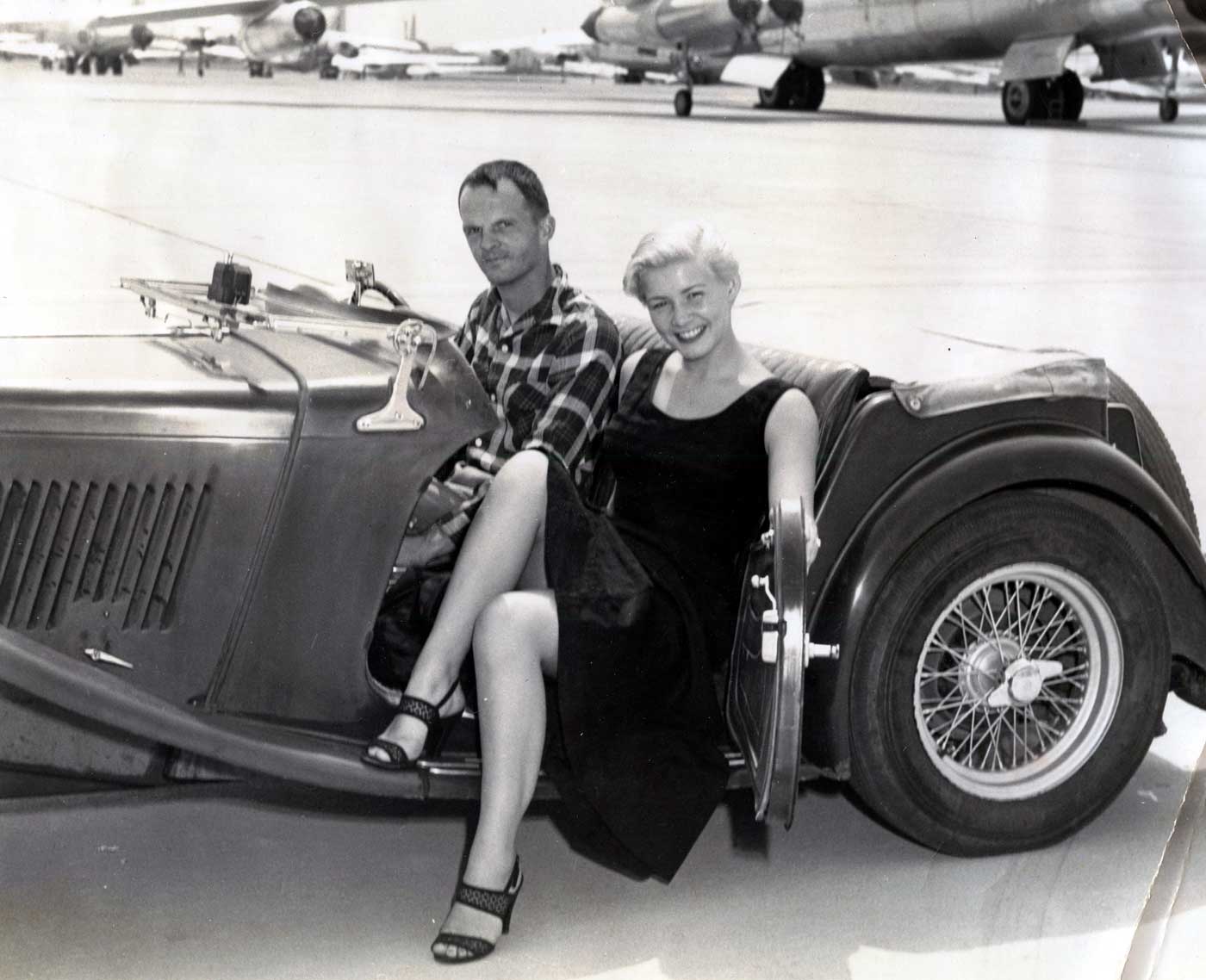
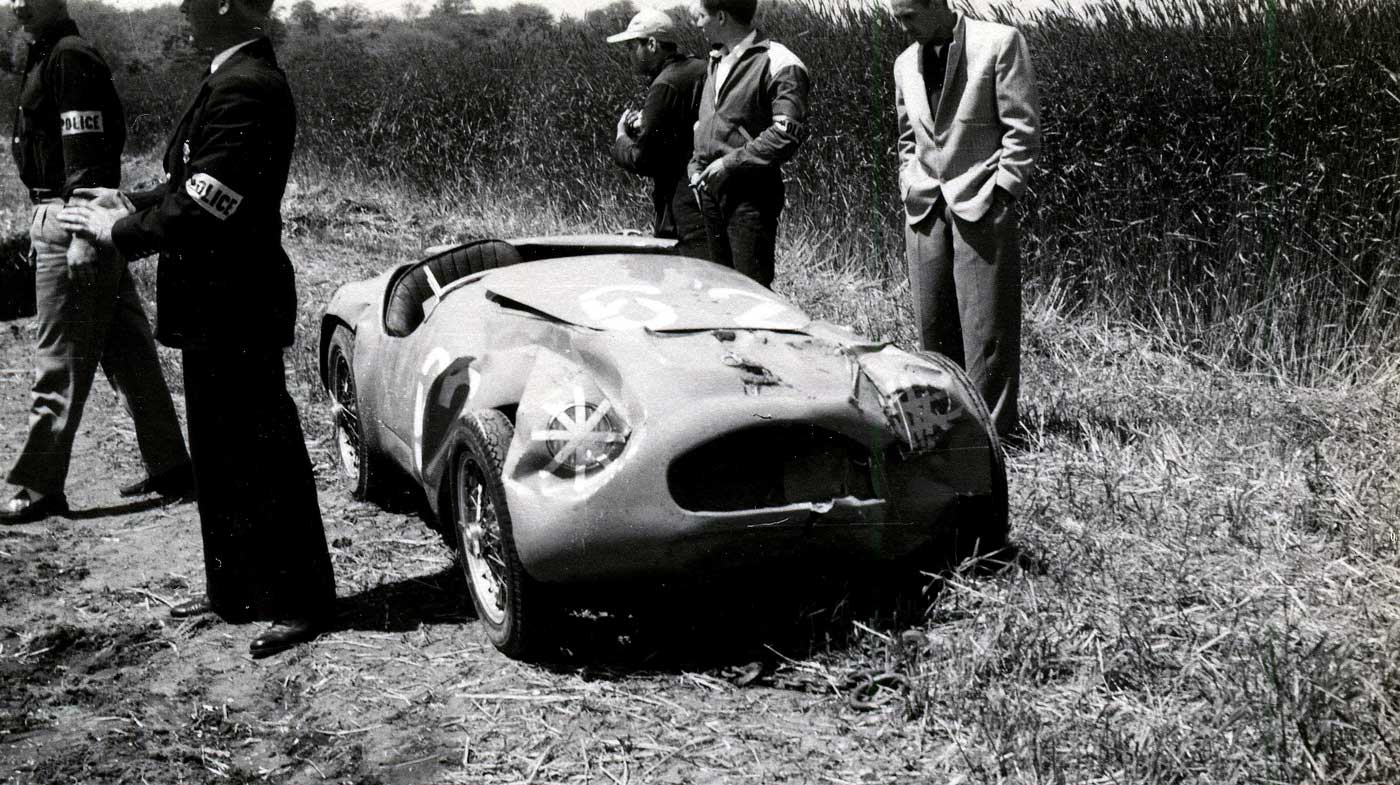
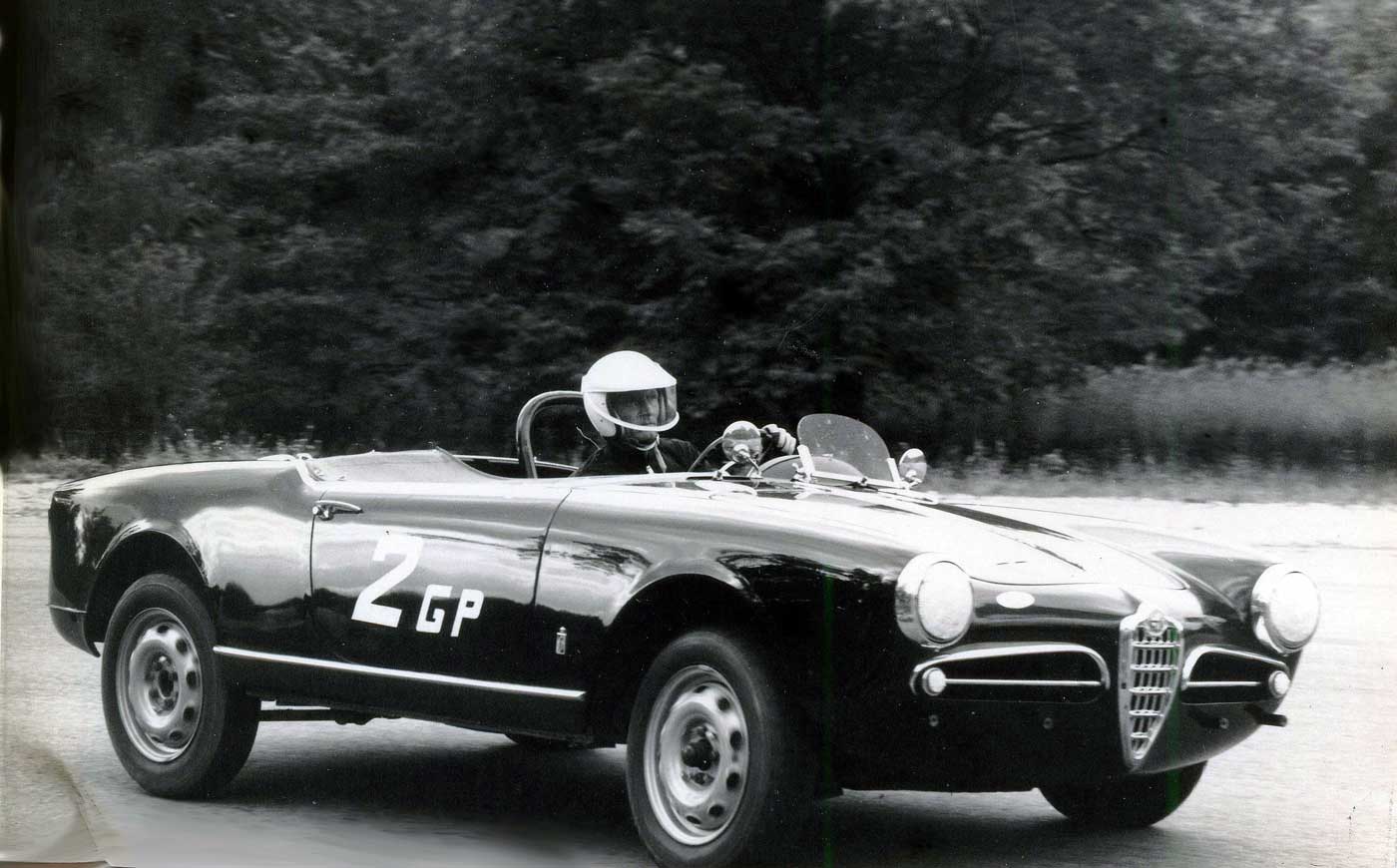
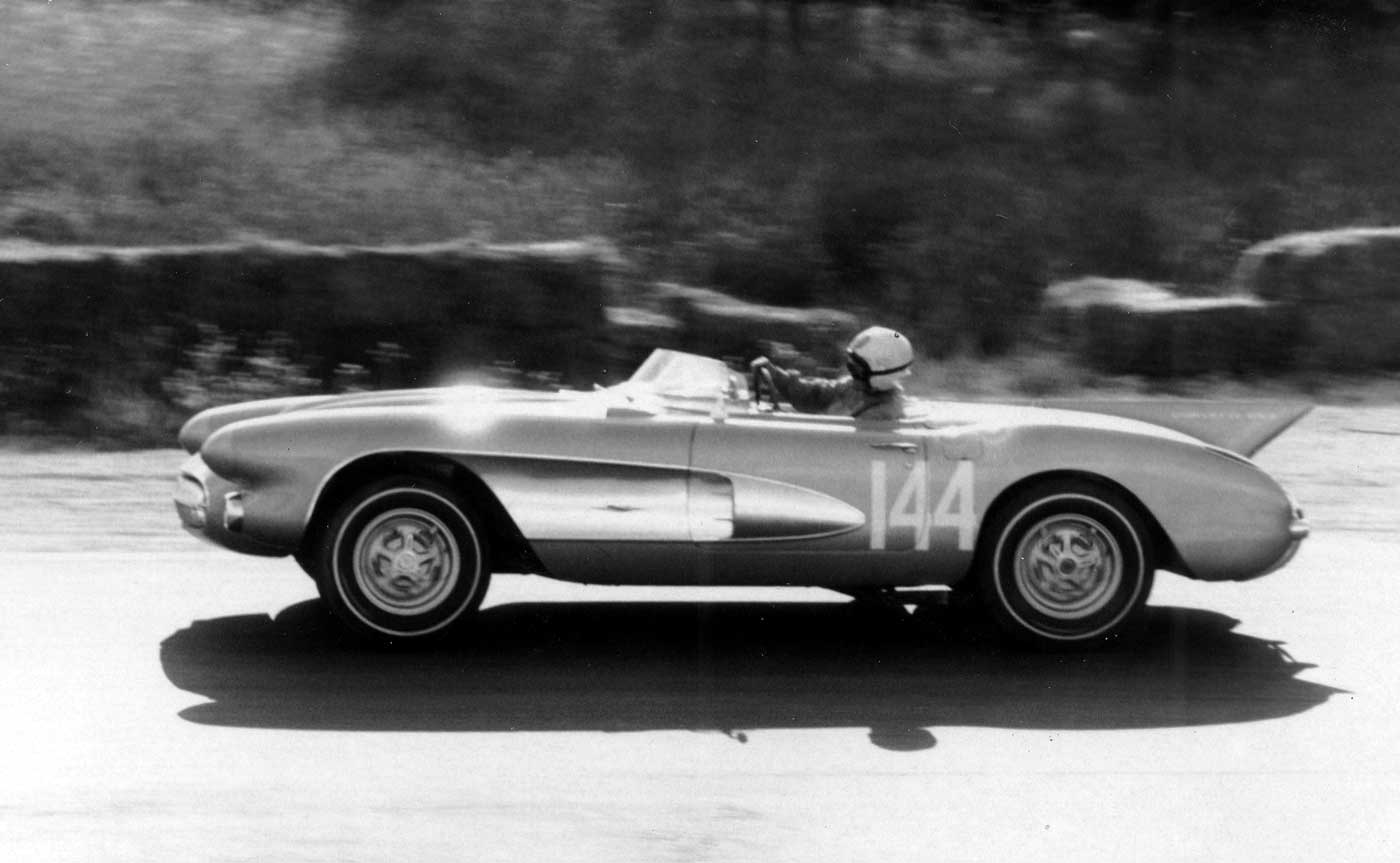
Hi Pete,
Interesting article and some good photos. Most Brits of my age or older will recall Raymond Glendenning, a somewhat eccentric sports broadcaster (soccer, boxing and tennis, possibly more) of the 50s and 60s. In some respects he was similar to UK motor racing’s 50s/60s commentator John Bolster, larger than life.
This historical coverage and photos are much appreciated. I missed this era being in college and the Navy from 1952 to May 1960. But lucky to be at Monaco one week after being discharged. It was a real rush to get there but worth every minute. Then Zandfoort GP and LeMans 24 Hour. Pete, I need to organize those photos. Regards, Steve Snyder
Terrific! Looking forward to the next ecition.
Great stuff! Thank you Pete Vack for bringing these photos to us. They tell the story of sports car racing in America better than words. And, thank you Glen Glendenning and Dave Rex. Dave, please contact me at jeff.allison@comcast.net. Regards-Jeff Allison
Can’t say about the specific photos you published, but in your picture of Glendenning himself he is using a Leica, maybe IIIa or IIIb, which is not an SLR camera.
Dave was known as a good photographer, and much later with a “good SLR and lens” but in the top picture he is using what looks like a Leica C3 with Elmar lens. A very good combination, as I have used one similar for race car photography. Nice article. Thanks
I helped Dave Rex write a description of the Comet when he was offering it for sale. What can you say about a stripped-down MGTD with 300 horsepower? No wonder Augie Pabst looks worried in that picture. Anyone attempting to race it had to be suicidal. Dave made sure its Swiss buyer fully understood what he was getting. The man is still alive, and he and Dave have become good friends, so it all turned out OK.
Pete, Thanks for another good report of a period that many of us love to see more about.
I think the 50s saw many outstanding cars in terms of driving pleasure and eye appeal. Like many people, I wish I could have kept certain cars for the pleasure of driving.. NOT the owning or collecting.. I used to like to just look at my MGA and later the Double Bubble Abarth Fiat. It never made any sense to me to make a car that was not also beautiful in some way.
Keep up the good work my old friend,
Lee
I’ve had a couple Leicas, a IIIf and an M3 (1954 model). This was a little before the heyday of the SLR’s. Virtually every magazine cover from the 50’s-60’s seems like it was taken by a Leica. they were simply the best. Zeiss (Contax) made some good cameras but Leicas were the choice of most.
I’d say the camera in the picture is possibly a IIIc, but more likely a IIIf, introduced in 1950. Concur the lens is a collapsible Elmar, likely 5.0cm. The lens could be collapsed into itself, thus making the camera marginally pocketable with baggy pants.
These lenses , especially stopped down, made the sharpest images of all time, even by modern standards. And the camera bodies were bulletproof.
With a good flash and stopped down, I can make damaged cars look REALLY bad!
(No soft focus for documenting!)